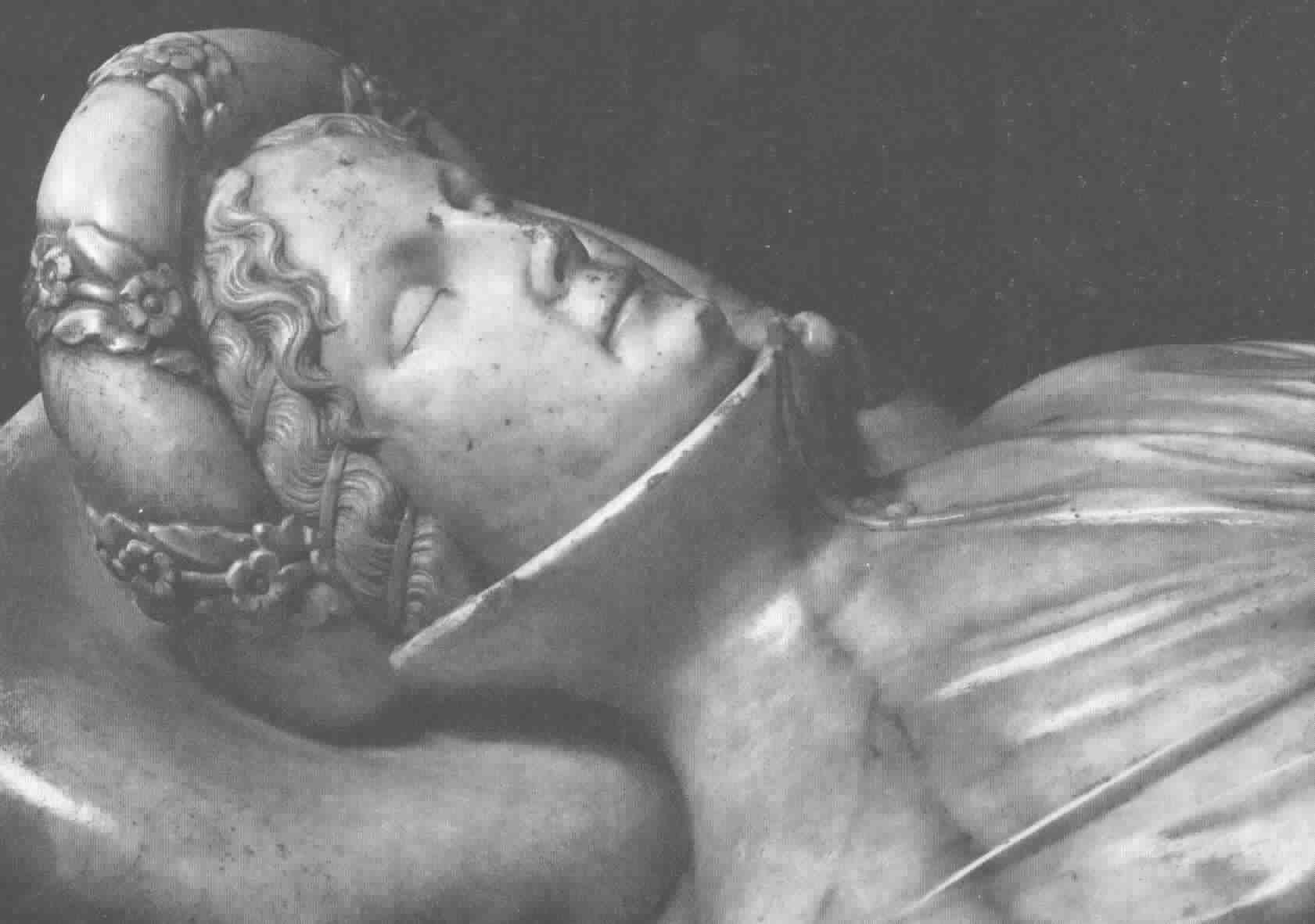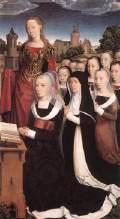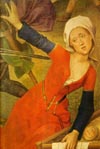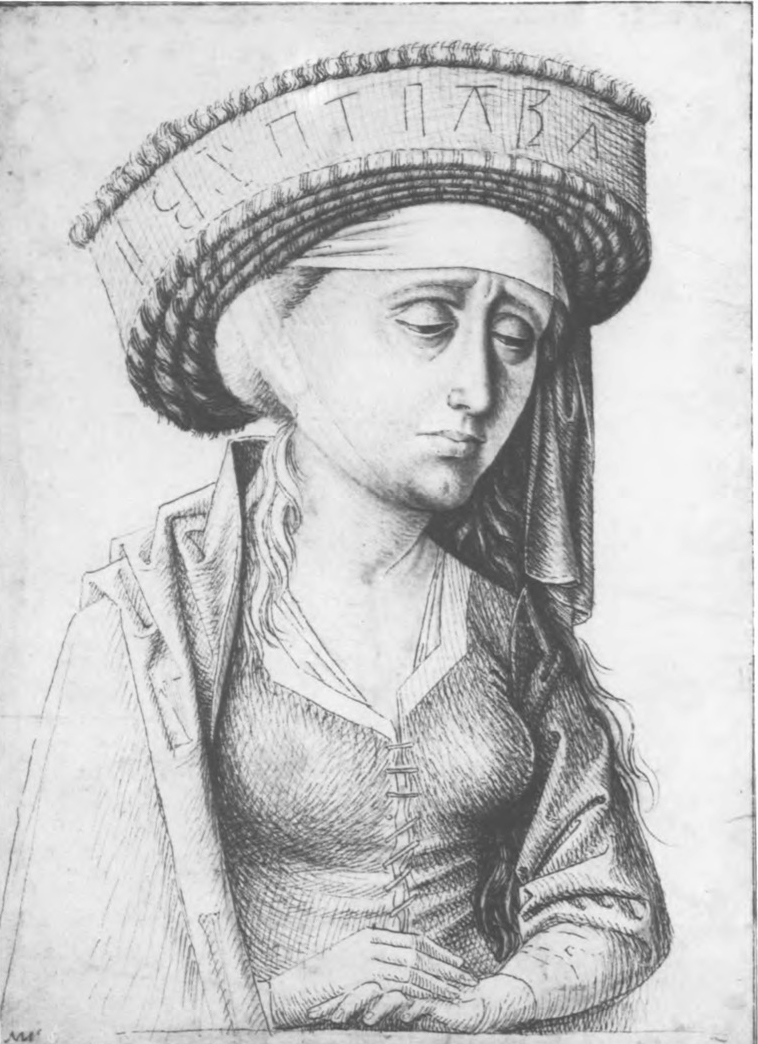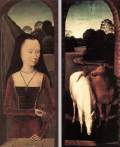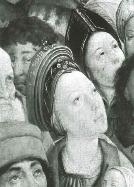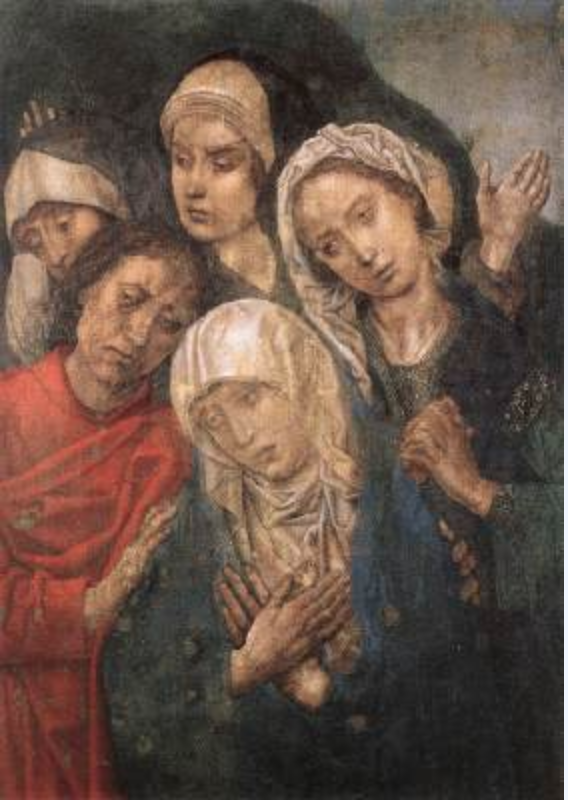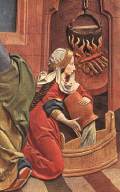
Detail from monumental brass
Unknown Civilian and Wife
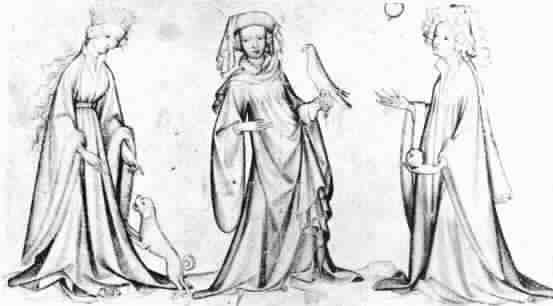
Three Ladies. France or Bohemia
additional detail: evanspl131c.jpg
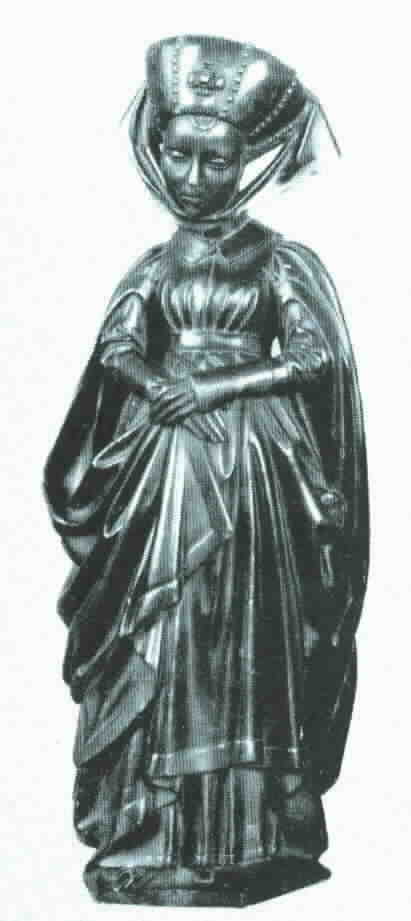
Gavenbeeldjes
From the tomb of Isabella of Bourbon.
The statuettes are believed to be representative of family members. Unlike monumental brasses,these sculptures show seam lines. Note the shoulder/armhole seams and front opening.
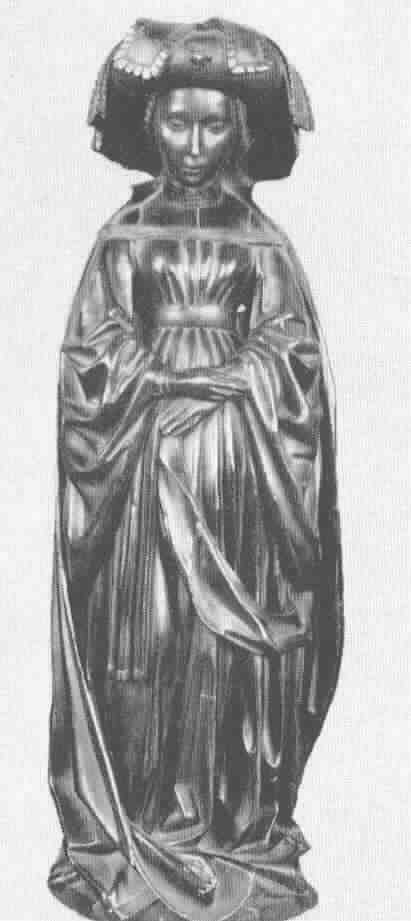
Gavenbeeldjes
From the tomb of Isabella of Bourbon.
Ilaria del Carretto
Though Italian, this houppelande displays the same characteristics of the others presented here. The headdress, however, is quite Italian! Note the interesting sleeve detail. Hunnisett discusses this gown and provides a drawing.
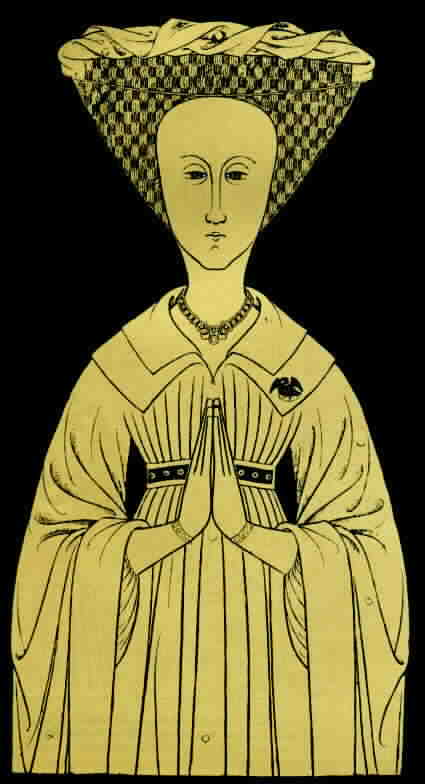
Joan Peryent
Collar of underdress follows line of collar of overdress. Note full bishop sleeves of underdress.

(Vos, p. 177)
Detail from The Crucifixion
The Magdalen wears a purple (velvet?) houppelande, lined with green over a red undergown. Her undersleeves are a gold/green patterned fabric. She appears to have a purse or some object hanging between her undergown and overgown. Her headdress is either elaborately wrapped or wrapped over a more fitted cap/wrapping. It is unclear from this reproduction whether the ends of her open houppelande sleeves are bound in black fabric or with the green of the lining fabric.

(Dhanens, p. 99)
Detail from the Ghent Altarpiece (Adoration of the Lamb)
The loose rose wool houppelande (the color in this reproduction tends towards brown), lined with green, has large open sleeves that do not really show the sleeves of the undergown. The linen inner collar follows the lines of the houppelande neckline, though the artist has depicted it as rather askew!

Web Gallery of Art
Lady Wearing a Gauze Headdress
Fur lined brown houppelande. (Jean Hunnisett uses this image as a basis for one of her patterns.)

(Vos, p. 14)
Detail from The Descent from the Cross
Mary's supporter wears a green houppelande lined with gray fur. (Note the way the neckline is bound by the fur lining.) Her undergown is laced in the center front.
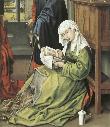
(Campbell, p. 393)
The Magdalen Reading (fragment of an altarpiece)
The Magdalen wears a fur lined green houppelande over a gold underdress. According to Campbell her headdress is "recognizably different from those worn by contemporaries and which resemble the headdresses thought suitable for the Virgin and other women of biblical times." (p. 395)
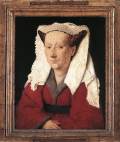
Web Gallery of Art
Portrait of Barbara van Eyck
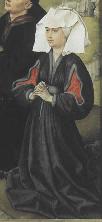
(Vos, p. 235)
Detail from the Triptych of the Crucifixion
The donor's wife wears a black fur-lined houppelande with bagged sleeves and red undersleeves. The front opening extends below her waist. Her headdress resembles that of the "Lady" above more so than that of the biblical women in Weydan's other paintings. Note how her sleeve appears to be twisted at the wrist.

(Ainsworth, p. 97)
Detail from Saint Eligius (also known as "The Goldsmith's Shop)
The lady appears to be wearing a sheer neck drape or partlett. I was able to see this painting quite closely at the Met in NY last year but I'm afraid even close up the headdress was difficult to figure out. It appeared that the linen veils (one sheer and one more opaque) were supported by wire above the height of the ear pieces, that is, the structure covering the ears ends under the opaque veil and something additional actually holds the veil up.
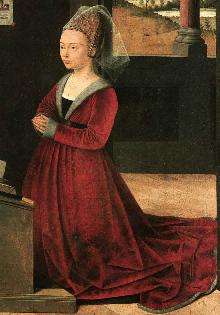
(Ainsworth, p. 133)
Detail from Portrait of a Female Donor
This gown is interesting as a burgundian/houpellande transition. It has the fitted sleeves and deep v-neck of the Burgundian but the fullness approaching a houppelande. In any case, it is fur lined and worn over a black undergown or insert. The truncated henin resembles that of the Weydan Portrait of a Woman. The sleeve head is interesting because it suggests that the sleeve is not a raglan sleeve, rather a regular set in sleeve that has a deep armscye.

(Vos, p. 299)
Detail from St. John Altarpiece
The two visitors are quite tiny images in the original painting, hence not a lot of detail. The woman in front wears a red houppelande over a black undergown.

